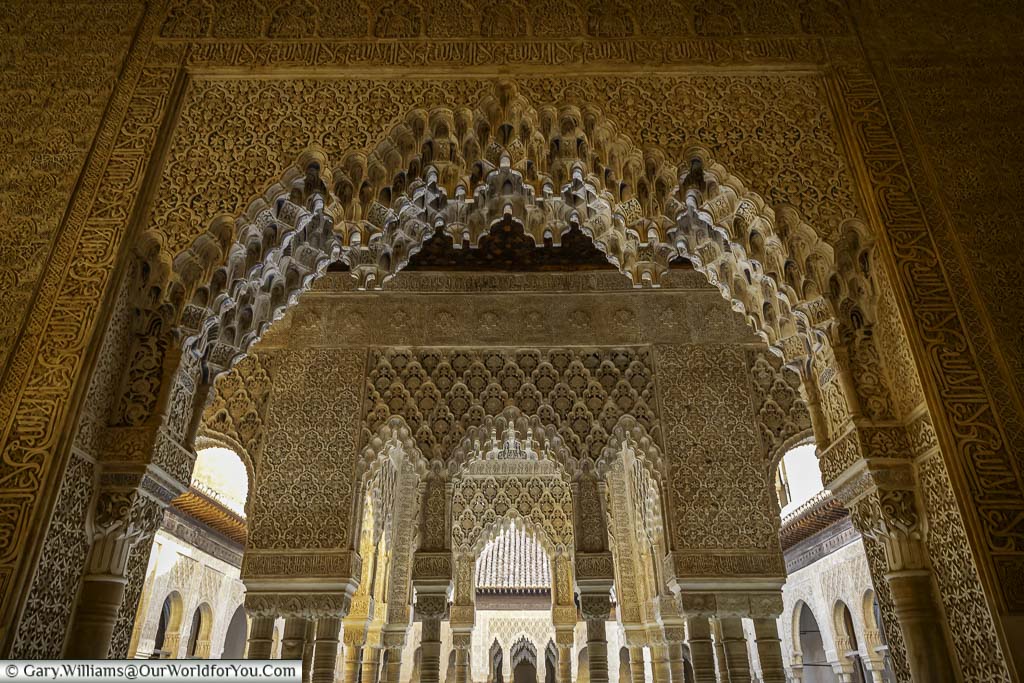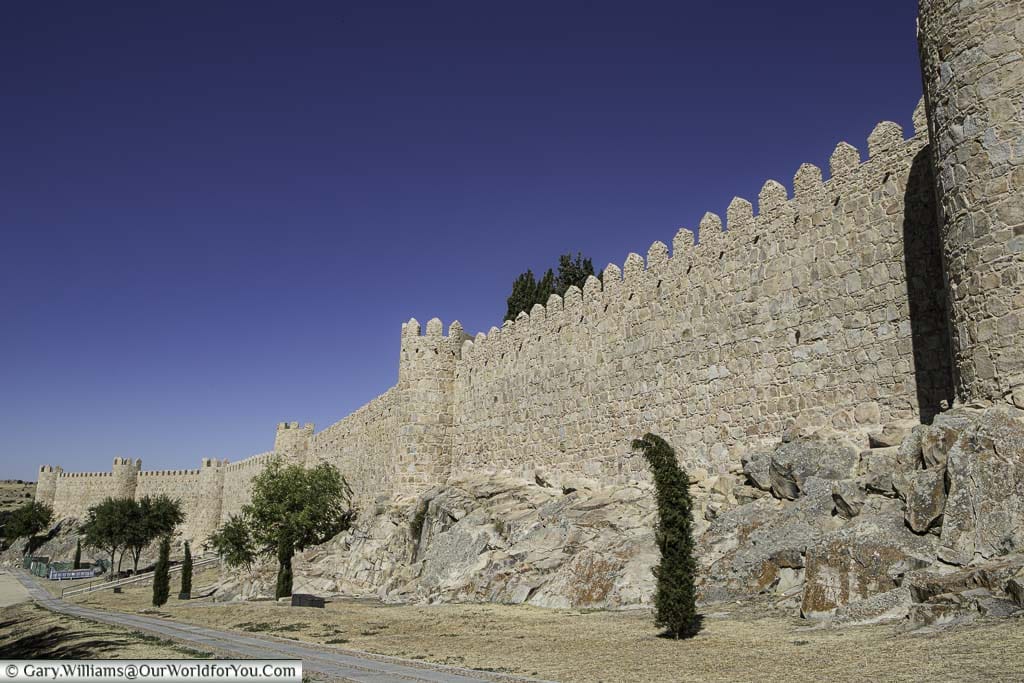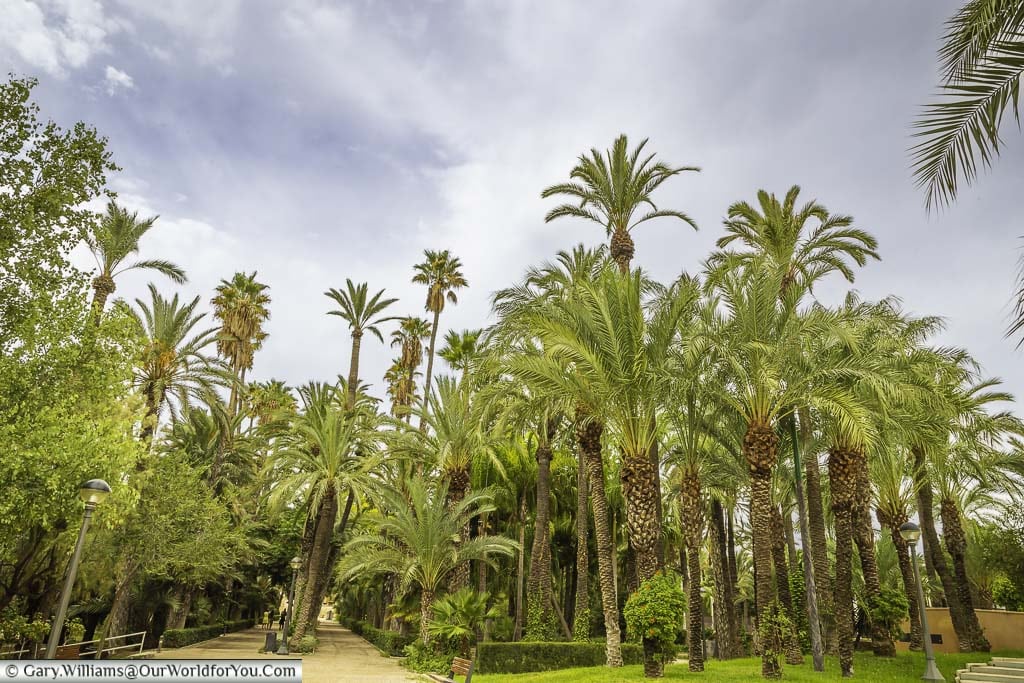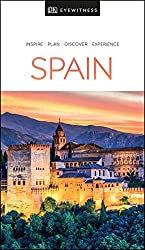Our first taster of Spain’s top historical sites
we will returnThere’s something to be said about the reminiscing of your travels. And when I wrote my previous two posts on UNESCO World Heritage Sites in Portugal and France, I loved them. So, I thought I’m going to do one for Spain too. Firstly, I didn’t realise Spain had so many UNESCO sites, and secondly, I never realised how many we had already visited.
Gary and I usually look out for UNESCO World Heritage Sites in any regions we travel to. It wouldn’t be right if we didn’t go and hunt down a slice of local history.
Some of these UNESCO sites can get a little overcrowded, and there are a few that you may never even have heard of.
However, regardless of their popularity, they are all worth a visit. Keep an eye out for part 2 of our UNESCO sites to visit in Spain.

Our first selection


There’s an incredible amount of history here, take a delightful evening stroll amongst the ochre-coloured city walls and weave your way through charming tiny lanes.
Turn after turn you’re greeted with ancient towers, churches and courtyards.
Where to stay in Cáceres
Stay informed

Just after you’ve visited the bustling Mercado pop across the road to the La Lonja de la Seda. Built between 1482 and 1533 in late gothic style, the building was once used a Silk Exchange and added to the UNESCO list in 1996.
It’s beautiful inside, and with an entrance fee of just €2, it’s well worth a visit.
Where to stay in Valencia
The accommodation we chose while staying in Valencia was in the apartment Mon Suites Catedral. It was incredibly central, clean, and peaceful.
Having the apartment gave us many options; however, I loved just stepping out of the door in the morning and finding a traditional café for breakfast filled with Spanish locals.
There are so many incredible places to discover in Spain and I love planning a mini-break. I often use the DK Eyewitness books, I find them extremely informative, easy to follow and the pictures and maps tempt you into searching for more.
We used a previous version of this book to plan our trip to Valencia, now you can grab the revised copy.

The historic centre of Córdoba was inscribed on the UNESCO World Heritage List in 1984.
Although it isn’t just the Mosque-Cathedral on the list, also included are other ancient sites around the historic city, AIcázar de Los Reyes Cristianos and the Roman bridge across the River GuadaIquivir.

Where to stay in Córdoba
We love Seville, and it's a great base to explore Andalucía, I love nothing more than planning a trip and so often I use the DK Eyewitness books. I find them extremely informative, easy to follow and the pictures and maps tempt you into discovering more.
We used a previous version of this book to plan our southern Spanish road trips, now you can grab the revised copy.

Nearby and still heading up Mount Naranco is the church of San Miguel de Lillo and also part of Oviedo’s UNESCO site.
If you keep climbing higher, you then get an incredible view across the Asturias countryside of northern Spain.
Where to stay in Oviedo
Create your own Spanish Road Trip


Take a wander around sunny Barcelona to find Park Güell, Casa Milà-La Pedrera and Sagrada Família, just three of the seven properties on the UNESCO World Heritage List.
This has to be fun, jump on an eScooter and take a 2 ½ hour guided tour of Gaudi’s masterpieces.
Where to stay in Barcelona
For our mini break to Barcelona, we chose the rather opulent Hotel Neri Relais & Chateaux, in the quiet lanes in the old town of Barcelona. It was close to the Cathedral, the Rambla and the harbour.
It offers first-class service, as you would expect.

We’ve now visited on two occasions, our first visit Gary and I decided to climb to the top of the hill, where the Alhambra is located. However, we arrived slightly tired in the Spanish heat, and just a little too late, as we found out that we had missed the chance of visiting inside Alhambra Palace.
Nevertheless, we were still able to tour the grounds and the castle.




Where to stay in Granada
For our stay in Granada, we chose the exquisite Hotel Palacio de Santa Paula, part of the Autograph Collection, centrally located and close to the Cathedral. Quiet, relaxing and a wonder place to come back to at the end of the day exploring.
Off-site, secure parking was available at an additional cost.

Where to stay in Salamanca


The Old Town of Ávila was inscribed onto the UNESCO List in 1985. There are plenty of historic buildings still within the walls, including the ancient Gothic cathedral and four Romanesque churches.
Why not jump on a guided tour and combine a visit to Salamanca and the walled city of Ávila and discover their history?
Where to stay in Ávila


Zaragoza was inscribed onto the UNESCO List in 1986 for its historic Mudejar Architecture of Aragon. I adore the Mudéjar style of architecture, which combines Islamic and Christian influences to create such eye-catching monuments.
The specific Mudéjar examples found in Zaragoza are features in La Seo de Zaragoza, the Cathedral of the Savior, which sits upon the site of the old Roman Forum.
Additionally, the tower and parish church of San Pablo de Zaragoza dating from the 13th century and the exquisite surviving Mudéjar features of the Aljafería Palace of Zaragoza.

If you’re visiting Zaragoza, the Aljafería Palace is a must; for just a few euros, you’ll be treated to some Moorish splendour that is very rarely seen. The royal rooms are within the north side hall of the Santa Isabel Courtyard. The Moorish architecture and marble flooring here are astonishing.
Why not jump on a private guided walking tour and discover the iconic sights of Zaragoza with a local guide.
Where to stay in Zaragoza
The hotel is very centrally located in the heart of the Old Town. It’s just a few minutes’ walk to the Plaza de España and a short hop to the bustling tapas bars in the El Tubo de Zaragoza district.
It has an underground car park with access next to the hotel; a daily charge is applied.
The Palmeral of Elche in southeast Spain is within the Valencia region and is an incredible sight to see. Strolling beneath the magnificent date palm canopies was surreal.
The Palmeral, or the Palm Grove of Elche, has been a UNESCO World Heritage Site since 2000, and it is easy to understand why it is extraordinary.

These magnificent trees had been nurtured in Elche since around the fifth century BC, during the Iberian period. However, the cultivation of date palms to the extent that can be admired today was introduced to the city of Elche when the Moors arrived from North Africa towards the end of the 10th century.
Elche became an Islamic city, and evidence of the stunning Moorish architecture can be admired throughout the city.

The Palm Grove of Elche comprises the Route of El Palmeral, Palm Grove Museum, National Artistic Garden, and Municipal Park. The Palmeral of Elche is one of the largest in the world and the only palm grove in Europe with North African origins.
Incredibly, the main Palmeral of Elche contains 97 orchards and 70,000 date palms; it is almost like a forest within a city. However, the palm tree plantations extend further out of the centre and comprise another 130,000 palms.
Where to stay in nearby Murcia
The hotel is very centrally located, just a 5 minutes’ walk to the historic Old Town and many of the significant sights of Murcia.
The rooms are very comfortable and clean. We chose to stroll out each morning for breakfast as we enjoy eating in local cafés. Sercotel Amistad Murcia has an underground car park; a daily charge is applied.
There are so many incredible places to discover in Spain and I love planning road trips. I often use the DK Eyewitness books, I find them extremely informative, easy to follow and the pictures and maps tempt you into searching for more.
We used a previous version of this book to plan our Spanish road trips, now you can grab the revised copy.
More of UNESCO Spain
This is just a taster; we have another eight locations for you to explore in Spain in a post entitled - 'UNESCO World Heritage sites to visit in Spain – Part 2'. Why not check it out if?
Of course, we also listen - what other UNESCO sites in Spain should we include on our next visit to Spain? why not leave us a comment below?
* This post may contain links to affiliated sites where we earn a small commission at no additional charge to you.




This is really a great content to read, the images are just amazing simply a treat to your eyes. Thanks for the share. Cheers!!
Thanks very much for your kind comments, there are so many wonderful UNESCO sites in Spain that we have another post coming out on Friday with even more.